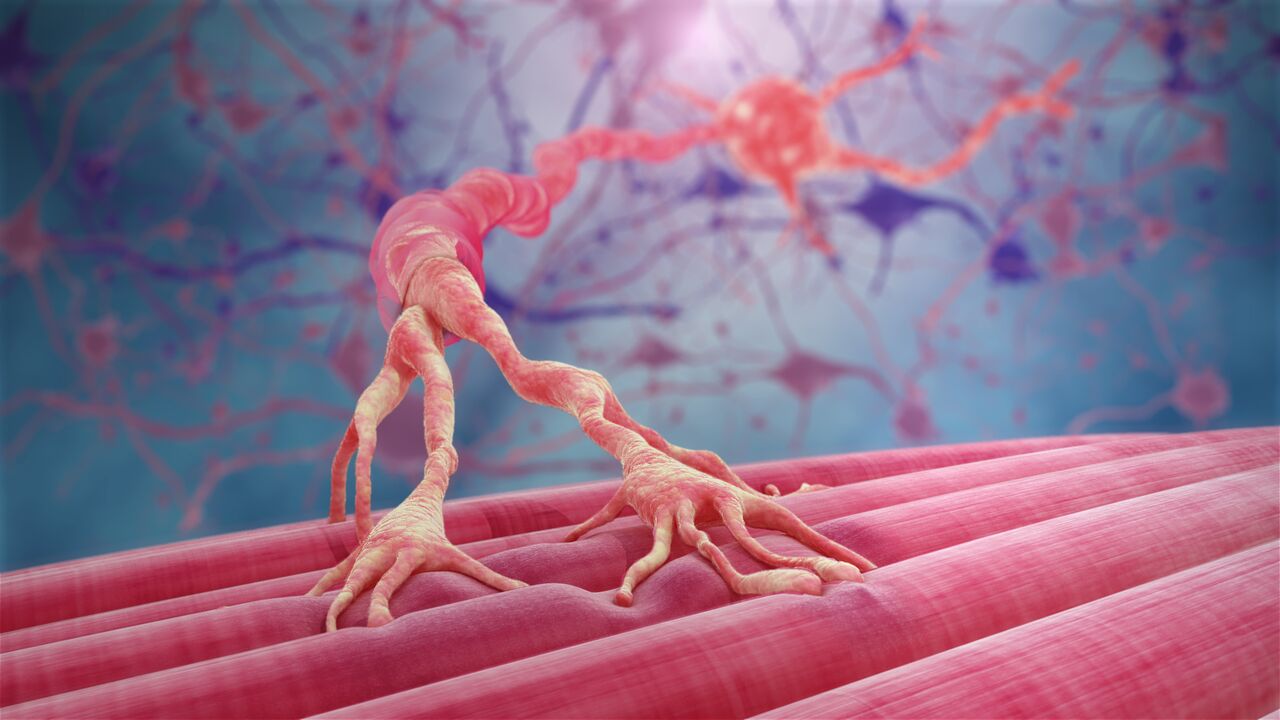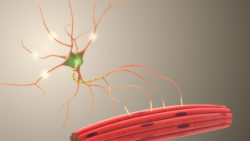Signal transmission occurs across the nervous system as the neurons conduct electrical signals to and from the brain and spinal cord. This is possible because of a critical component present the neuron structure - the myelin sheath, that acts as an electrical insulator, and speeds up action potential conduction. This is because the action potential is generated only at the points along the axon, where there is a gap in the myelin wrapping. As a result, the impulse “leaps” through it. Unmyelinated axon conduction velocities range from about 0.5 to 10 m/s, while myelinated axons can conduct at velocities up to 150 m/s.

The myelin sheath could either be damaged by an external chemical agent (myelinoclastic), or it may degenerate on its own due to genetic abnormality (leukodystrophic). Additionally, demyelinating diseases can be divided into those affecting the central nervous system (CNS) and those presents in the peripheral nervous system (PNS), presenting different demyelination conditions.
In this article, we talk about some important demyelinating disorders that can be life-threatening.
- Multiple Sclerosis (MS)
This is most common demyelinating disorder that often occurs in women. In MS, the body’s own immune system attacks the organs of the nervous system. Symptoms range from vision problems (due to optic nerve damage) to severe trouble in movement (due to improper functioning of brain and spinal cord). The cause of this autoimmune condition could be genetic or environmental. Although MS cannot be completely cured, there are medications to manage it and prevent its relapse.
- Charcot-Marie-Tooth Disease (CMT)
CMT is a genetically-inherited condition affecting peripheral nerves that send signals to the muscles in the limbs. Naturally, the symptoms associated would be like: weakness in legs, ankles, and feet causing trouble in locomotion, tripping and falling, loss of muscle mass in the legs and feet, trouble in moving the ankles and lack of sensation in the legs and feet, and sometimes arched feet or curled toes. Pain can be managed with medicines, while physiotherapy proves to be helpful in strengthening the limb muscles. Weak joints may need to supported by braces and splints.
- Guillain-Barre Syndrome (GBS)
This is another disorder of the peripheral nerves that often starts with legs and moves upwards, eventually paralyzing the whole body. Breathing issues associated with GBS could prove to be life-threatening. The cause is unknown, however, doctors have observed the incidence of GBS post a respiratory or digestive tract infection in most cases. Sometimes, GBS may follow a surgery too. Plasma exchange is a common treatment. Another option is intravenous immunoglobulin.
- HTLV-I Associated Myelopathy (HAM)
The condition results when HTLV-1 virus attacks the brain and spinal cord, causing them to swell. Not everyone who has the virus gets HAM; some people also carry HTLV-1 but have no symptoms. The disease is spread through body fluids. It is usually not fatal.
Symptoms usually include: weakness, numbness and tingling in legs, muscle spasms, constipation, double vision, tremors, etc. Steroids are usually taken to ease the symptoms.
- Neuromyelitis Optica (Devic’s Disease)
This is a rare disease in which the body’s immune system causes demyelination of the optic nerve and spinal cord, consequently, leading to blindness and paralysis in severe cases.
The cause of Neuromyelitis optica is a mystery, therefore, there are no FDA-approved medications to treat it. Steroid shots provide relief from swelling. Plasma exchange, too, is often performed in such cases. Since the condition is autoimmune, immunosuppressive drugs may be helpful.
Conclusion
Researchers are working to gain better insight into how demyelinating disorders affect the CNS and PNS, their development and the effect of external factors. Identifying and understanding mechanisms of these disorders will help in devising targeted therapies for affected individuals.

The body’s IoT system
It’s called the neural network. First, billions of tiny sensing cells make sense of stimuli. Second, a high speed network of neurons carries electrical signals through the body. Third, different types of neurons convert sensory information into impulses that control the body. In this way, neurons are the base for the body’s own IoT system. Read More..








